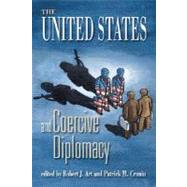
Note: Supplemental materials are not guaranteed with Rental or Used book purchases.
Purchase Benefits
What is included with this book?
| Foreword | vii | ||
|
|||
| Acknowledgments | xv | ||
| Contributors | xvii | ||
| 1. Introduction | 3 | (18) | |
|
|||
| 2. Humanitarian Relief and Nation Building in Somalia | 21 | (36) | |
|
|||
| 3. Coercive Diplomacy in the Balkans: The U.S. Use of Force in Bosnia and Kosovo | 57 | (62) | |
|
|||
| 4. The Delicate Balance between Coercion and Diplomacy: The Case of Haiti, 1994 | 119 | (38) | |
|
|||
| 5. Nuclear Weapons and North Korea: Who's Coercing Whom? | 157 | (68) | |
|
|||
| 6. The 1995-96 Taiwan Strait Confrontation: Coercion, Credibility, and the Use of Force | 225 | (50) | |
|
|||
| 7. Coercive Diplomacy against Iraq, 1990-98 | 275 | (30) | |
|
|||
| 8. Coercive Diplomacy and the Response to Terrorism | 305 | (54) | |
|
|||
| 9. Coercive Diplomacy: What Do We Know?' | 359 | (62) | |
|
|||
| Index | 421 |
The New copy of this book will include any supplemental materials advertised. Please check the title of the book to determine if it should include any access cards, study guides, lab manuals, CDs, etc.
The Used, Rental and eBook copies of this book are not guaranteed to include any supplemental materials. Typically, only the book itself is included. This is true even if the title states it includes any access cards, study guides, lab manuals, CDs, etc.